Serrano pepper chillies are spicy and extremely versatile when it comes to the many different culinary creations you can make with them.
Because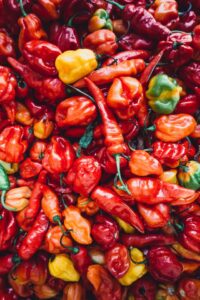 they are such a versatile fruit, many people choose to grow the Serrano pepper plant at home.
they are such a versatile fruit, many people choose to grow the Serrano pepper plant at home.
Just like any chilli plant, there’s a lot to do to make sure you grow your Serrano just right so that you can get a healthy, bountiful yield.
To help you, we’ve collected all the best tips and handy information so that you know exactly how to grow Serrano chilli like a pro:
What Are Serrano Pepper Plants?
Serrano chilli plant peppers (Capsicum Annuum Longum) were originally grown in the mountains of Mexico in Pueblo and Hidalgo.
In fact, name Serrano is actually derived from the term ‘Sierras’ – the name of the mountains in that part of Mexico.
The Serrano chilli plant peppers can be red, brown, orange or yellow but are most commonly sold in a green colour.
They also average around 1-4 inches in length and they tend to be about half an inch in girth.
If you’re wondering what they are like compared to other more well known chillies, you could compare them to the jalapeño as they are similar in appearance and in their meaty, juicy, thick texture.
What Dishes Can I Use Serrano Peppers In?
Serrano chilli plant peppers are extremely versatile when it comes to cooking, which is why so many people want to know how to grow them well. They are particularly yummy in a spicy salsa, like the one in this Youtube Serrano chilli salsa recipe.
You can also use them to make spicy relishes and hot sauces, pico de gallo and even yummy savoury marmalade’s. We particularly love them pickled and then used in kebab, falafel or chicken grill wraps.
How Hot Is The Serrano Pepper?
The Serrano chili plant pepper is several times hotter than the Jalapeno pepper, scoring a Scoville Scale rating in between 10,000 – 25,000. That makes it hotter than the jalapeño which is more towards 8,000 on the Scoville Scale.
However, as it is as crunchy, dense and fresh as the jalapeño it’s a bit like a hotter, spicier relative of that popular chilli and can be used in many of the same sort of dishes that a jalapeño is.
How To Grow Serrano Pepper?
Growing a Serrano chilli plant is completely achievable for any beginner gardener. To get to grips with how to grow Serrano chilli, all you need to do is follow these steps:
- The first step is to let the serrano chili pepper seeds sprout. You do this by sowing the seeds ¼ inch deep in a seedling tray. The seed starts will need some warmth and sunshine in order to germinate properly. As it is recommended that you do this indoors, you could place a heat mat under the tray and then put the tray near a window with lots of sun exposure. Artificial lighting is a good substitute if not enough sun is entering through the window.
- After 2 – 3 weeks, you can transplant the young plants into the garden, or into pots to grow indoors. There should be a distance of about 12 – 48 inches apart for each young plant. Each row should be at least 24 – 36 inches apart. If you are growing them in pots, you should grow one pepper per pot. Peppers like warm temperatures so you should plant them in places that get lots of sun.
- The area of the garden, or the pot where you plant the peppers should have a fertile soil with a PH between 6.2 – 7 and that soil must be well drained otherwise it could cause diseases like leaf spot.
- Your chillies are ready for harvesting in 2.5 months starting from the day you transplant them. The plant will yield a lot of small waxy green fruits in 60 days. After 80 – 100 days, the green peppers will be big and ripe in red, yellow or orange shades. During harvesting, you use a pruning shear or sharp knife to nip off the chili pepper. The fruit can last longer if you keep the stem attached.
- After harvesting the peppers, you can keep them in an airtight plastic bag or plastic container in the refrigerator. Serrano chilli peppers don’t tend to do well being dried so are best pickled or made into storable sauces, jams or pickles.
Extra Growing Tips
- If you want to get lots of yummy fruits from your Serrano chilli plant your soil must be rich in potassium, calcium, and phosphorus. In addition, you must regularly water the plant and make sure the soil is moist all the time. If your soil does not contain enough nutrients, you can put 3 – 5 inches of rich compost above the soil. You may also want to use organic fertilizer to fertilize the plant when it shows signs of fruiting.
- When growing the plants outside in early in spring, you can use a row cover to keep them warm and protect them from the cold. If a surprise spring frost is in the forecast, it is advised that you use a frost blanket to cover and protect the young plants. The plants tend to grow poorly and the leaves may turn yellowish when the temperature falls below 55º F or 12º C.
- It could be worth checking out tips on topping and pruning chilli plants to get a bigger yield. You can find more information about this area of chilli plant cultivation here.
Now You Know How To Grow Serrano Peppers Like A Pro
With a little dirt and some seeds, you really can create something wonderful right in your own backyard.
Now you know how to grow a Serrano Pepper plant like a pro, you’ll be well on your way to creating delicious dishes, sauces and dips to delight your family and friends.






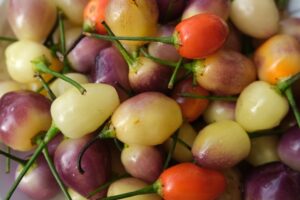

 over the world wanting to see if it’s heat is really as hot as it’s famed to be.
over the world wanting to see if it’s heat is really as hot as it’s famed to be.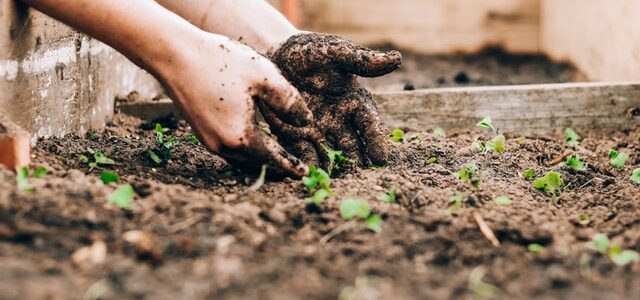



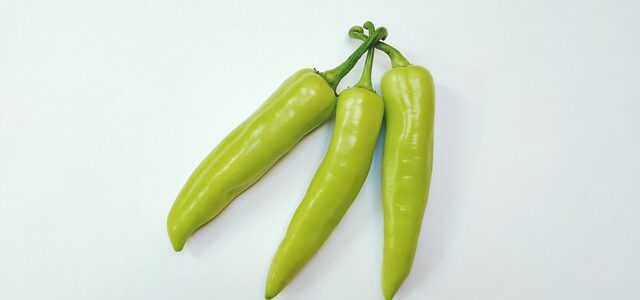
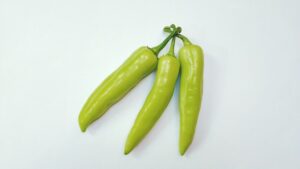 banana. Most of the time, the fruits it yield are deep yellow color when fully mature but they can also be red or orange color sometimes.
banana. Most of the time, the fruits it yield are deep yellow color when fully mature but they can also be red or orange color sometimes.
 that scores in between 500 – 2,500 in the Scoville heat rating. The thick walled pepper can add both sweet and spicy taste to your dishes. It is a tradition for the New
that scores in between 500 – 2,500 in the Scoville heat rating. The thick walled pepper can add both sweet and spicy taste to your dishes. It is a tradition for the New
 the healthiest option as store bought versions are often salty and have a lot of additives.
the healthiest option as store bought versions are often salty and have a lot of additives.